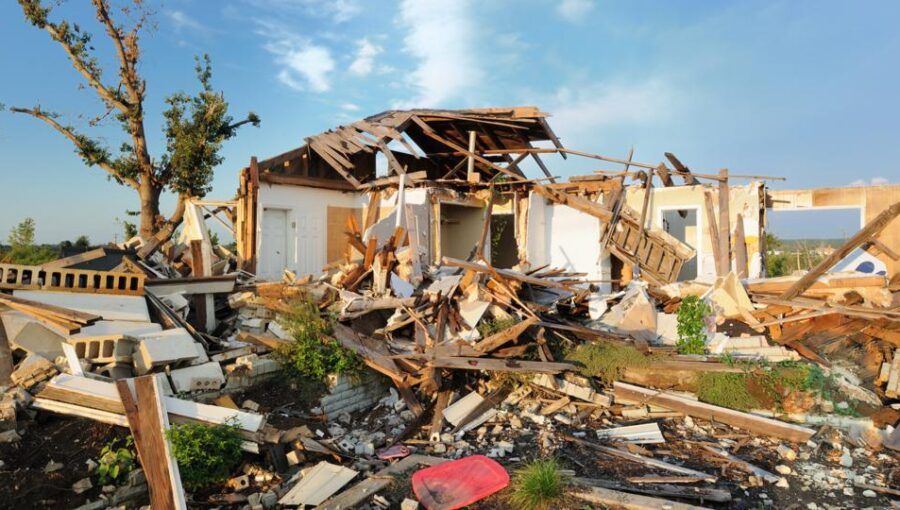What would happen if a natural disaster destroyed your home and you discovered your insurance policy didn't cover the damage?
Understanding Natural Disaster Insurance
Natural Disaster Insurance provides critical financial protection against the devastating impacts of catastrophic events like hurricanes, wildfires, and floods. While many homeowners assume their standard home insurance quotes include comprehensive protection against all disasters, the reality is that coverage varies significantly depending on the type of disaster and your geographic location.

Natural disasters can cause catastrophic damage to homes, making proper insurance essential
The insurance industry has developed specialized policies to address the unique risks posed by different types of natural disasters. Understanding these distinctions is crucial for homeowners to ensure they have adequate protection against the specific threats most likely to affect their property.
Hurricane Insurance Coverage
Hurricanes present complex insurance challenges because they involve multiple types of damage:
- Wind Damage: Typically covered by standard homeowners insurance, though some coastal areas have separate windstorm deductibles or exclusions.
- Water Damage: Damage from rain entering through wind-damaged roofs is usually covered, but flooding from storm surge is not.
- Storm Surge: Requires separate flood insurance as it's excluded from standard policies.
In hurricane-prone regions, insurers may impose special deductibles that are calculated as a percentage of your home's insured value rather than a fixed dollar amount. These typically range from 1-5% of the home's value and apply only to hurricane-related claims.
Wildfire Insurance Coverage
Wildfire insurance coverage varies significantly by region:
- Standard Coverage: Most homeowners policies include fire damage, including wildfires.
- High-Risk Areas: In wildfire-prone regions, insurers may impose higher premiums, special deductibles, or coverage restrictions.
- Non-Renewals: Some insurers are refusing to renew policies in areas with extreme wildfire risk.
- State Programs: Some states have created FAIR (Fair Access to Insurance Requirements) plans to provide coverage when private insurers won't.
Homeowners in wildfire-prone areas can often reduce premiums by implementing fire-resistant construction materials, creating defensible space around their property, and installing sprinkler systems.
Flood Insurance Coverage
Flood insurance is one of the most misunderstood aspects of homeowners coverage:
- Standard Exclusion: Nearly all homeowners policies specifically exclude flood damage.
- NFIP Coverage: Most flood insurance is provided through the National Flood Insurance Program (NFIP).
- Private Options: An increasing number of private insurers now offer flood insurance, often with higher coverage limits.
- Waiting Periods: Flood insurance typically has a 30-day waiting period before coverage takes effect.
Many homeowners mistakenly believe they don't need flood insurance if they don't live in a designated flood zone. However, approximately 25% of flood claims come from properties outside high-risk flood zones, making coverage important for nearly all homeowners.
Earthquake Insurance Coverage
Earthquake insurance is another specialized coverage that's typically excluded from standard policies:
- Separate Policy: Earthquake coverage is purchased as an endorsement or separate policy.
- High Deductibles: Earthquake policies typically have deductibles of 10-20% of the home's value.
- Geographic Variations: Premiums vary dramatically based on seismic risk in your area.
- State Programs: California has a state-managed earthquake insurance program (CEA) that provides standardized coverage.
Different regions face varying natural disaster risks, requiring tailored insurance coverage
Catastrophe Insurance Options
For comprehensive protection against natural disasters, homeowners have several options:
- Endorsements: Add-ons to standard policies that extend coverage for specific disasters.
- Separate Policies: Individual policies for each type of disaster risk (flood, earthquake, etc.).
- All-Risk Policies: Comprehensive policies that cover most perils except those specifically excluded.
- Parametric Insurance: Newer products that pay out automatically when certain parameters are met (e.g., wind speed, rainfall amount).
The best approach depends on your specific risks, budget, and the insurance options available in your area. Working with an independent insurance agent who understands local risks can help ensure you have appropriate coverage.
Business Insurance Considerations
For business owners, natural disaster protection extends beyond property coverage:
- Business Interruption: Coverage for lost income during recovery periods.
- Extra Expense: Coverage for additional costs to continue operations after a disaster.
- Equipment Breakdown: Protection for damage to equipment from power surges or other disaster-related issues.
- Contingent Business Interruption: Coverage for losses when suppliers or customers are affected by disasters.
Business insurance for natural disasters requires careful consideration of all potential impacts on operations, not just physical damage to property.
Conclusion: Comprehensive Protection for an Uncertain Future
As climate change increases the frequency and severity of natural disasters, having appropriate natural disaster insurance has never been more important. Understanding what's covered by your standard policy and what additional coverage you need is essential for protecting your most valuable asset.
Regular policy reviews, risk assessments, and working with knowledgeable insurance professionals can help ensure you have the right coverage in place before disaster strikes. In an era of increasing climate risks, comprehensive natural disaster protection isn't just a financial decision—it's a critical component of responsible homeownership.

